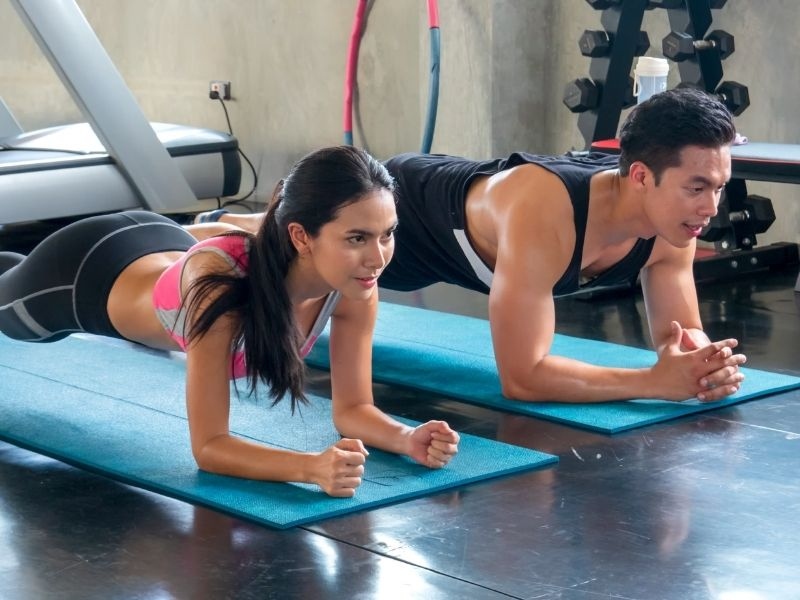One of the easiest and cheapest ways to stay healthy is to move your feet. Walking regularly can improve fitness and heart health, relieve depression and fatigue, boost the immune system, help you keep a healthy weight, and lower your risk for some chronic diseases, among many other benefits.
But if you want to burn more calories and get fitter even more (and can do more intense exercise), new research shows that going faster can really boost many of those benefits.
Researchers from the Boston University (BU) School of Medicine recently set out to answer some questions about exercise. For example, "How much better is moderate-to-vigorous exercise than low-intensity exercise like walking?" The answer is "Very," it turns out. If you change your daily walk from a stroll to a jog, you not only burn more calories, but you also burn those calories more efficiently. And compared to less intense forms of exercise, moderate-to-vigorous exercise improved fitness levels a lot. (The findings are published in the European Heart Journal. They are based on a study of about 2,000 people who took part in the Framingham Heart Study.)
In an interview with BU's The Brink, the study's lead researcher, Matthew Nayor, said, "If you want to improve your fitness level or slow down the inevitable decline in fitness that comes with aging, doing at least a moderate level of exertion is over three times more effective than just walking at a relatively low cadence."
Talk to a doctor or nurse about your plans and health goals before making big changes to your exercise routine.
+ What does it mean to be "more efficient"?
Researchers weren't surprised to find that moderate to vigorous exercise burns more calories. It's clear that much is true.
The researchers found that these moderate-to-vigorous exercises actually make it easier on the body to work out and help your muscles work better.
Many people's muscles work best when they work out harder: peak performance will be better, and the body will find it easier to adjust to starting and stopping the workout.
Nayor said, "We were surprised to find that higher-intensity activity was also better than walking at improving the body's ability to start and keep up lower levels of effort."
So, even though jogging for 10 minutes may make you tired faster than walking for 30 minutes, your body is not only burning more calories, but it is also doing so more efficiently and with less stress.
+ So, how can I use this in my daily workouts?
Even if all you can (or want to) do is take a casual walk, making walking a regular part of your life will be great for your health. But if you usually walk for 45 minutes in a nearby park every other morning, you could add 10 minutes of jogging to your routine (and perhaps working up from there). Your body may need some time to get used to this extra energy use, but it can be better for your health than walking for an extra half hour.
High-intensity exercises can also help people who don't have much time. It's good for your body and can save you a lot of time if you change that hour-long walk into a twenty-minute jog.
"One thing about our results that I keep coming back to is the fact that more time spent sitting still can be made up for by regular exercise. During the pandemic, when many of us are spending even more time sitting in front of a computer, it's comforting to know that my daily run or Peloton class is at least keeping my fitness level up "said Nayor.
Keep in mind that it's important to be consistent. Increasing your speed is a great idea, but don't do too much! If your body can only handle moderate or intense exercise for a short time, it's fine to do most of your exercise at a low level of intensity. The Physical Activity Guidelines for Americans say that people should exercise moderately for 150–300 minutes per week or vigorously for 75–150 minutes per week. If you push yourself too hard, you could hurt yourself or get tired before you reach your health goals.
+ Here are some exercises that are moderately to very hard that you can add to your routine.
Talk to your healthcare provider about your health goals before making big changes to how active you are or how you work out. Moderate-intensity activity is any activity that raises your heart rate by 50–60% compared to when you're at rest. Here are some examples of exercises that are moderately to very hard: • A brisk walk (3.5 to 4 miles per hour) • Even at low speeds, cycling • More active sports like tennis, basketball, soccer, and badminton for recreation.










 And then Add to Home Screen.
And then Add to Home Screen.